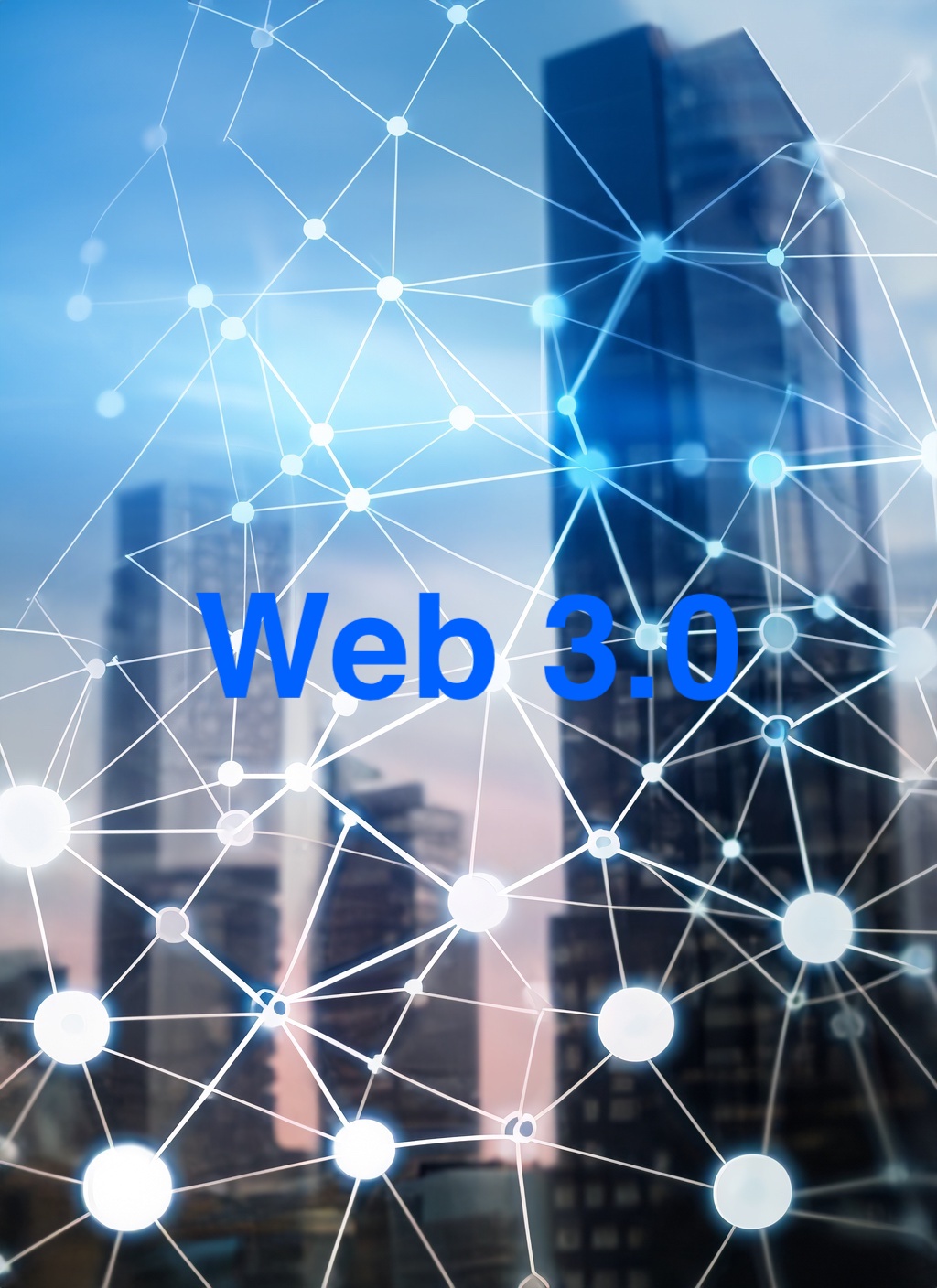Table of content
-
Introduction to Web3.0
- Benefits of Web3.0
- Challenges of Web3.0
- The future of Web3.0
- Conclusion
What is Web3.0?
Web3.0, also known as Web 3.0, is the third generation of the World Wide Web, which is still under development. It is characterized by its focus on decentralization, openness, and user control.
Web1.0 was the first generation of the web, and it was characterized by static websites that were primarily used for information retrieval. Web2.0 was the second generation of the web, and it was characterized by interactive and user-generated content. Web3.0 is expected to be more decentralized, secure, and transparent than previous generations of the web.
Here are some of the key features of Web3.0:- Decentralization: Web3.0 applications are built on decentralized networks, such as blockchains. This means that they are not controlled by any single entity, and users have more control over their data and privacy.
- Openness: Web3.0 applications are built on open-source software, which means that anyone can contribute to their development. This makes them more transparent and accountable.
- User control: Web3.0 applications give users more control over their data and interactions. For example, users can own their own data and decide who has access to it.
- Security: Web3.0 applications use cryptography to secure data and transactions. This makes them more secure than traditional web applications.
- Artificial intelligence (AI) and machine learning: Web3.0 applications will use AI and machine learning to provide more personalized and relevant experiences for users.
- More user control and privacy: Users will have more control over their data and interactions, which will lead to increased privacy and security.
- Increased transparency and security: Decentralized applications are more transparent and secure than traditional web applications, which can help to reduce fraud and abuse.
- New economic opportunities: Web3.0 will create new economic opportunities for users, developers, and businesses.
- Improved efficiency and productivity: Web3.0 applications can be more efficient and productive than traditional web applications, which can lead to cost savings and increased profits.
- Technical complexity: Web3.0 applications are more complex to develop and use than traditional web applications.
- Lack of regulation: Web3.0 is still in its early stages, and there is a lack of regulation governing its development and use.
- Security risks: Web3.0 applications are still vulnerable to security risks, such as hacking and fraud.
Despite these challenges, Web3.0 has the potential to be a major transformation of the internet. It has the potential to make the web more decentralized, secure, and transparent, and it could create new economic opportunities for users, developers, and businesses.
Here are some examples of Web3.0 applications:- Decentralized finance (DeFi): DeFi applications allow users to lend, borrow, and trade cryptocurrencies without the need for a central authority.
- Non-fungible tokens (NFTs): NFTs are unique digital assets that can be used to represent ownership of anything from art to music to in-game items.
- The metaverse: The metaverse is a virtual world where people can interact with each other and with digital content.
Web3.0 is still in its early stages of development, but it has the potential to change the way we use the internet. It is a promising technology with the potential to make the web more decentralized, secure, and transparent.
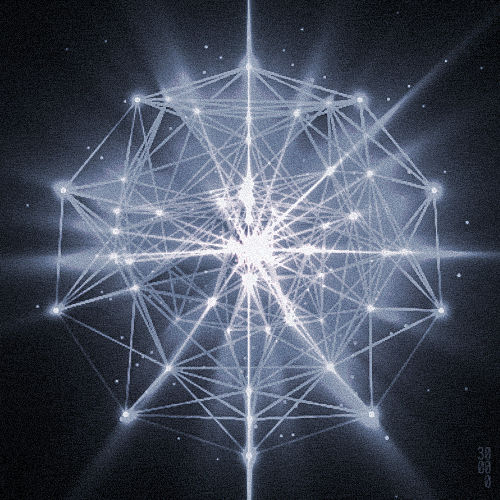
Key features of Web3.0
- Decentralization: Web3.0 applications are built on decentralized networks, such as blockchains. This means that they are not controlled by any single entity, and users have more control over their data and privacy. For example, in Web2.0, your data is stored on a centralized server owned by a company like Google or Facebook. This means that the company has control over your data, and they can use it for their own purposes, such as advertising. In Web3.0, your data is stored on a decentralized network, such as a blockchain. This means that no single entity has control over your data, and you have more control over who can access it.
- Openness: Web3.0 applications are built on open-source software. This means that anyone can contribute to their development, and the code is transparent for anyone to inspect. This makes Web3.0 applications more accountable and less likely to be used for malicious purposes.
- User control: Web3.0 applications give users more control over their data and interactions. For example, users can own their own data and decide who has access to it. They can also choose which applications they want to interact with, and they can be compensated for their data.
- Security: Web3.0 applications use cryptography to secure data and transactions. This makes them more secure than traditional web applications. For example, blockchains use cryptography to secure data and transactions, making it very difficult to hack or tamper with.
- Artificial intelligence (AI) and machine learning: Web3.0 applications will use AI and machine learning to provide more personalized and relevant experiences for users. For example, AI can be used to recommend products or services to users, or to personalize the content that they see.
These are just some of the key features of Web3.0. As the technology continues to develop, we can expect to see even more innovative and exciting applications of Web3.0.
Here are some examples of how these key features are being used in real-world applications:- Decentralized finance (DeFi): DeFi applications allow users to lend, borrow, and trade cryptocurrencies without the need for a central authority. This is made possible by the use of blockchain technology, which allows for secure and transparent transactions.
- Non-fungible tokens (NFTs): NFTs are unique digital assets that can be used to represent ownership of anything from art to music to in-game items. NFTs are secured by blockchain technology, which makes them tamper-proof and impossible to counterfeit.
- The metaverse: The metaverse is a virtual world where people can interact with each other and with digital content. The metaverse is being built on blockchain technology, which allows for secure and transparent transactions.
These are just a few examples of how the key features of Web3.0 are being used in real-world applications. As the technology continues to develop, we can expect to see even more innovative and exciting applications of Web3.0.
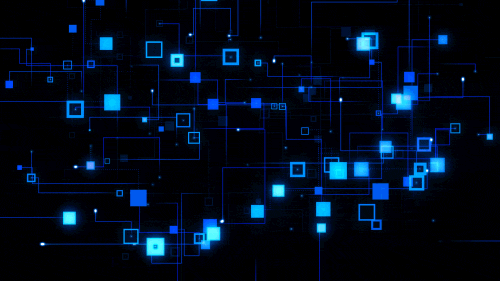
How does Web3.0 work?
Web3.0 is still under development, but it is built on a number of emerging technologies, including:
- Blockchain: Blockchain is a distributed ledger technology that allows for secure and transparent transactions. It is the underlying technology for cryptocurrencies like Bitcoin and Ethereum.
- Smart contracts: Smart contracts are self-executing contracts that are stored on a blockchain. They can be used to automate transactions and remove the need for a third party.
- Decentralized applications (dApps): dApps are applications that run on a decentralized network, such as a blockchain. They are not controlled by any single entity, and users have more control over their data and privacy.
- Artificial intelligence (AI): AI and machine learning are being used to develop more personalized and relevant experiences for users. For example, AI can be used to recommend products or services to users, or to personalize the content that they see.
Web3.0 applications are built on these technologies to provide a more decentralized, secure, and transparent internet. Here is a simplified overview of how Web3.0 works:
- Users interact with Web3.0 applications through a decentralized browser, such as Brave or MetaMask.
- The application sends a request to the blockchain network.
- The blockchain network validates the request and executes the smart contract.
- The results of the smart contract are returned to the application.
- The application updates the user's interface with the results.
This is just a simplified overview of how Web3.0 works. The actual implementation of Web3.0 applications will vary depending on the specific technology used.
Here are some of the ways that Web3.0 is expected to change the way we use the internet:
- More user control and privacy: Users will have more control over their data and privacy in Web3.0. They will be able to own their own data and decide who has access to it.
- Increased transparency and security: Web3.0 applications are more transparent and secure than traditional web applications. This is because they are built on decentralized networks, such as blockchains.
- New economic opportunities: Web3.0 will create new economic opportunities for users, developers, and businesses. For example, users can be compensated for their data, and developers can create new applications and services.
- Improved efficiency and productivity: Web3.0 applications can be more efficient and productive than traditional web applications. This is because they are not reliant on a single entity, and they can be used to automate tasks.
Web3.0 is still in its early stages of development, but it has the potential to be a major transformation of the internet. It has the potential to make the web more decentralized, secure, and transparent, and it could create new economic opportunities for users, developers, and businesses.

More user control and privacy
Some ways in which Web3.0 can give users more control and privacy:
- Decentralization: In Web3.0, data is stored on decentralized networks, such as blockchains. This means that no single entity controls the data, and users have more control over who can access it.
- Cryptography: Web3.0 applications use cryptography to secure data and transactions. This makes it more difficult for hackers to steal or tamper with data.
- Self-sovereign identity: Self-sovereign identity (SSI) is a way for users to own and control their own digital identity. This means that users can decide who has access to their data, and they can revoke access at any time.
- Zero-knowledge proofs: Zero-knowledge proofs (ZKPs) are a cryptographic technique that allows users to prove that they have certain information without revealing the actual information. This can be used to protect privacy in a variety of ways, such as when voting or making financial transactions.
These are just a few ways in which Web3.0 can give users more control and privacy. As the technology continues to develop, we can expect to see even more innovative ways to protect user data and privacy.
Here are some specific examples of how Web3.0 is being used to improve user control and privacy:- Decentralized finance (DeFi): DeFi applications allow users to lend, borrow, and trade cryptocurrencies without the need for a central authority. This means that users have more control over their money and their financial data.
- Non-fungible tokens (NFTs): NFTs are unique digital assets that can be used to represent ownership of anything from art to music to in-game items. NFTs are secured by blockchain technology, which makes them tamper-proof and impossible to counterfeit. This can help to protect the ownership and privacy of digital assets.
- The metaverse: The metaverse is a virtual world where people can interact with each other and with digital content. The metaverse is being built on blockchain technology, which can help to protect the privacy of users and their interactions.
These are just a few examples of how Web3.0 is being used to improve user control and privacy. As the technology continues to develop, we can expect to see even more innovative ways to protect user data and privacy.

Increased transparency and security
Sure. Here are some ways in which Web3.0 can increase transparency and security:
- Decentralization: In Web3.0, data is stored on decentralized networks, such as blockchains. This means that no single entity controls the data, and it is more difficult for anyone to tamper with or censor it.
- Cryptography: Web3.0 applications use cryptography to secure data and transactions. This makes it more difficult for hackers to steal or tamper with data.
- Open-source software: Web3.0 applications are built on open-source software. This means that the code is transparent for anyone to inspect, which makes it more difficult for malicious actors to exploit vulnerabilities.
- Smart contracts: Smart contracts are self-executing contracts that are stored on a blockchain. This means that they are transparent and cannot be tampered with.
- Auditability: Web3.0 applications can be audited to ensure that they are secure and transparent. This can be done by independent auditors or by the community.
These are just some of the ways in which Web3.0 can increase transparency and security. As the technology continues to develop, we can expect to see even more innovative ways to protect data and prevent fraud.
Here are some specific examples of how Web3.0 is being used to improve transparency and security:- Decentralized finance (DeFi): DeFi applications are built on blockchain technology, which makes them transparent and secure. This can help to prevent fraud and protect users' funds.
- Non-fungible tokens (NFTs): NFTs are unique digital assets that are stored on a blockchain. This makes them tamper-proof and impossible to counterfeit. This can help to protect the ownership and authenticity of digital assets.
- The metaverse: The metaverse is being built on blockchain technology, which can help to protect the privacy and security of users. For example, users can own their own digital assets in the metaverse and decide who has access to them.
These are just some examples of how Web3.0 is being used to improve transparency and security. As the technology continues to develop, we can expect to see even more innovative ways to protect data and prevent fraud.

New economic opportunities
Some of the new economic opportunities that Web3.0 can create in detail:
-
Decentralized finance (DeFi): DeFi is a financial system that is built on blockchain technology. It allows users to lend, borrow, and trade money without the need for a central authority. This can create new opportunities for users to:
- interest on their money: DeFi applications allow users to lend their money to others and earn interest on it. This can be a more profitable way to invest money than traditional savings accounts.
- Borrow money at lower interest rates: DeFi applications allow users to borrow money from others without the need for a bank. This can lead to lower interest rates for borrowers.
- Trade cryptocurrencies: DeFi applications allow users to trade cryptocurrencies without the need for a centralized exchange. This can lead to lower fees and faster transactions.
-
Non-fungible tokens (NFTs): NFTs are unique digital assets that can be used to represent ownership of anything from art to music to in-game items. NFTs can be bought, sold, and traded on decentralized marketplaces. This can create new opportunities for:
- Artists, musicians, and game developers to sell their work: NFTs can be used to sell digital art, music, and in-game items. This can give artists and creators more control over their work and allow them to earn royalties on future sales.
- Businesses to create new products and services: NFTs can be used to create new products and services, such as digital tickets, loyalty programs, and membership cards. This can lead to new ways for businesses to interact with their customers.
- Investors to invest in digital assets: NFTs can be seen as an investment, similar to stocks or bonds. Investors can buy and sell NFTs in the hope of making a profit.
-
The metaverse: The metaverse is a virtual world where people can interact with each other and with digital content. The metaverse is still in its early stages of development, but it has the potential to create new opportunities for:
- Businesses to sell goods and services: Businesses can sell goods and services in the metaverse, such as virtual clothing, furniture, and accessories.
- Users to earn money by participating in the economy: Users can earn money in the metaverse by performing tasks, such as playing games, attending events, or providing services.
- Developers to create new experiences: Developers can create new experiences in the metaverse, such as games, social platforms, and educational tools.
-
Web3.0 infrastructure: The development of Web3.0 infrastructure, such as decentralized storage and computation platforms, will also create new economic opportunities. This is because these platforms will be needed to support the development and operation of Web3.0 applications.
- Companies that develop decentralized storage and computation platforms: These companies will need to build and maintain the infrastructure that powers Web3.0 applications.
- Developers who build applications on top of Web3.0 infrastructure: These developers will need to create new applications that take advantage of the decentralized nature of Web3.0.
- Users who use Web3.0 applications: These users will need to pay for the services that they use.
These are just some of the new economic opportunities that Web3.0 can create. As the technology continues to develop, we can expect to see even more innovative ways to use Web3.0 to create value and generate income.

Technical complexity
Web3.0 is a complex technology, and it can be difficult to understand and develop applications for it. Here are some of the technical challenges of Web3.0:
- Blockchain technology: Web3.0 applications are built on blockchain technology, which is a complex and evolving technology. This can make it difficult to develop and maintain Web3.0 applications.
- Cryptography: Web3.0 applications use cryptography to secure data and transactions. This can be a complex and challenging area of computer science.
- Decentralization: Web3.0 applications are decentralized, which means that they do not rely on a central authority. This can make it difficult to manage and secure Web3.0 applications.
- Scalability: Web3.0 applications need to be scalable to support a large number of users and transactions. This can be a challenge, as blockchain technology is not as scalable as traditional centralized systems.
- Security: Web3.0 applications need to be secure to protect users' data and assets. This can be a challenge, as blockchain technology is still a relatively new technology and there are still some security vulnerabilities.
These are just some of the technical challenges of Web3.0. As the technology continues to develop, we can expect to see these challenges being addressed. However, it is likely that Web3.0 will remain a complex technology for some time to come.
Here are some ways to overcome the technical complexity of Web3.0:- Use of tools and frameworks: There are a number of tools and frameworks available to help developers build Web3.0 applications. These tools can help to simplify the development process and make it easier to learn about the technology.
- Education and training: There are a number of educational resources available to help developers learn about Web3.0. These resources can help to bridge the knowledge gap and make it easier for developers to get started.
- Collaboration: The Web3.0 community is a vibrant and active community. There are a number of ways to get involved in the community and learn from other developers.
- Experimentation: The best way to learn about Web3.0 is to experiment with it. There are a number of ways to do this, such as building your own applications or participating in hackathons.
By overcoming the technical complexity of Web3.0, developers can build innovative and disruptive applications that can change the way we interact with the internet.
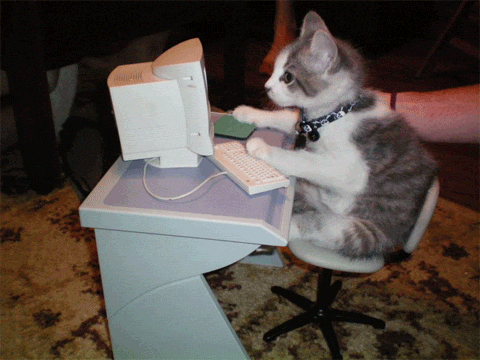
Lack of regulation
Sure. Web3.0 is still in its early stages of development, and there is a lack of regulation governing its development and use. This can be a challenge, as it can lead to uncertainty and risk for businesses and users.
Here are some of the challenges posed by the lack of regulation in Web3.0:- Fraud and scams: The lack of regulation can make it difficult to prevent fraud and scams in Web3.0. For example, there have been cases of people being scammed out of their cryptocurrency investments.
- Money laundering: The lack of regulation can make it easier for criminals to launder money through Web3.0. For example, cryptocurrencies can be used to anonymously transfer funds, which can make it difficult to track and trace criminal activity.
- Security risks: The lack of regulation can make it difficult to ensure the security of Web3.0 applications and networks. For example, there have been cases of hacking attacks on Web3.0 platforms.
- Compliance risks: Businesses that operate in Web3.0 may face compliance risks, as there are no clear rules or regulations governing their activities. For example, businesses may need to comply with anti-money laundering regulations, even if they are not located in a jurisdiction with specific regulations for Web3.0.
These are just some of the challenges posed by the lack of regulation in Web3.0. As the technology continues to develop, it is likely that regulation will catch up. However, it is important to be aware of these risks and take steps to mitigate them.
Here are some ways to mitigate the risks posed by the lack of regulation in Web3.0:- Do your research: Before investing in or using any Web3.0 application or platform, do your research to make sure that it is legitimate and secure.
- Use reputable services: Only use reputable services that have a good track record.
- Be careful with your personal information: Do not share your personal information with anyone you do not trust.
- Keep your devices secure: Keep your devices up to date with the latest security patches and use strong passwords.
- Be aware of the risks: Be aware of the risks involved in using Web3.0 and take steps to mitigate them.
By being aware of the risks and taking steps to mitigate them, you can help to protect yourself from fraud, scams, and other problems.

Security risks
Web3.0 is a relatively new technology, and it is still under development. As a result, there are some security risks associated with it. Here are some of the security risks of Web3.0:
- Phishing: Phishing is a type of fraud where attackers send emails or text messages that appear to be from a legitimate source, such as a bank or financial institution. The emails or text messages will often contain a link that, when clicked, will take the victim to a fake website that looks like the real website. Once the victim enters their personal information on the fake website, the attackers can steal it.
- Malware: Malware is software that is designed to harm a computer system. Malware can be installed on a computer through a variety of ways, such as clicking on a malicious link, opening an infected attachment, or downloading a file from an untrusted source. Once malware is installed on a computer, it can steal personal information, damage files, or take control of the computer.
-
Scams: Scams are fraudulent schemes that are designed to trick people out of their money. There are many different types of scams, but some common ones that involve Web3.0 include:
- Investment scams: These scams involve promising high returns on investments in cryptocurrencies or other Web3.0-related products or services.
- ICO scams: These scams involve selling tokens that are not backed by any real value.
- Rug pulls: These scams involve developers abandoning a project after raising money from investors.
- Technical vulnerabilities: Web3.0 applications are built on complex technology, and there are still some technical vulnerabilities that have not been addressed. These vulnerabilities can be exploited by attackers to steal personal information, damage data, or take control of systems.
These are just some of the security risks of Web3.0. As the technology continues to develop, it is likely that new security risks will emerge. It is important to be aware of these risks and take steps to mitigate them.
Here are some ways to mitigate the security risks of Web3.0:- Use a hardware wallet: A hardware wallet is a physical device that stores your cryptocurrency private keys. This makes it more difficult for attackers to steal your cryptocurrency.
- Keep your software up to date: Software updates often include security patches that can help to protect you from attacks.
- Be careful with your personal information: Do not share your personal information with anyone you do not trust.
- Use strong passwords: Use strong passwords and enable two-factor authentication for all of your accounts.
- Be aware of the risks: Be aware of the risks involved in using Web3.0 and take steps to mitigate them.
By being aware of the risks and taking steps to mitigate them, you can help to protect yourself from fraud, scams, and other problems.

What are the potential applications of Web3.0?
Here are some of the potential applications of Web3.0:
-
Decentralized finance (DeFi): DeFi is a financial system that is built on blockchain technology. It allows users to lend, borrow, and trade money without the need for a central authority. This can create new opportunities for users to:
- Earn interest on their money: DeFi applications allow users to lend their money to others and earn interest on it. This can be a more profitable way to invest money than traditional savings accounts.
- Borrow money at lower interest rates: DeFi applications allow users to borrow money from others without the need for a bank. This can lead to lower interest rates for borrowers.
- Trade cryptocurrencies: DeFi applications allow users to trade cryptocurrencies without the need for a centralized exchange. This can lead to lower fees and faster transactions.
-
Non-fungible tokens (NFTs): NFTs are unique digital assets that can be used to represent ownership of anything from art to music to in-game items. NFTs can be bought, sold, and traded on decentralized marketplaces. This can create new opportunities for:
- Artists, musicians, and game developers to sell their work: NFTs can be used to sell digital art, music, and in-game items. This can give artists and creators more control over their work and allow them to earn royalties on future sales.
- Businesses to create new products and services: NFTs can be used to create new products and services, such as digital tickets, loyalty programs, and membership cards. This can lead to new ways for businesses to interact with their customers.
- Investors to invest in digital assets: NFTs can be seen as an investment, similar to stocks or bonds. Investors can buy and sell NFTs in the hope of making a profit.
-
The metaverse: The metaverse is a virtual world where people can interact with each other and with digital content. The metaverse is still in its early stages of development, but it has the potential to create new opportunities for:
- Businesses to sell goods and services: Businesses can sell goods and services in the metaverse, such as virtual clothing, furniture, and accessories.
- Users to earn money by participating in the economy: Users can earn money in the metaverse by performing tasks, such as playing games, attending events, or providing services.
- Developers to create new experiences: Developers can create new experiences in the metaverse, such as games, social platforms, and educational tools.
-
Web3.0 infrastructure: The development of Web3.0 infrastructure, such as decentralized storage and computation platforms, will also create new economic opportunities. This is because these platforms will be needed to support the development and operation of Web3.0 applications.
- Companies that develop decentralized storage and computation platforms: These companies will need to build and maintain the infrastructure that powers Web3.0 applications.
- Developers who build applications on top of Web3.0 infrastructure: These developers will need to create new applications that take advantage of the decentralized nature of Web3.0.
- Users who use Web3.0 applications: These users will need to pay for the services that they use.
These are just some of the potential applications of Web3.0. As the technology continues to develop, we can expect to see even more innovative and disruptive applications that can change the way we interact with the internet.

How will Web3.0 change the way we live and work?
Web3.0 is still in its early stages of development, but it has the potential to change the way we live and work in many ways. Here are some of the ways that Web3.0 could change the way we live and work:
- More control over our data and privacy: Web3.0 applications are built on decentralized networks, which means that users have more control over their data and privacy. This is because users own their own data and can decide who has access to it.
- More transparency and accountability: Web3.0 applications are built on transparent and auditable systems, which means that users can be more confident that their data is being used correctly. This is because all transactions are recorded on a public blockchain, which anyone can view.
- New economic opportunities: Web3.0 will create new economic opportunities for users, developers, and businesses. For example, users can earn money by participating in the decentralized economy, developers can build new applications and services, and businesses can create new products and services.
- More efficient and secure transactions: Web3.0 applications use cryptography to secure transactions, which makes them more secure than traditional web applications. This is because cryptography makes it difficult for hackers to steal or tamper with data.
- New ways to interact with the internet: Web3.0 will enable new ways to interact with the internet, such as through the metaverse and decentralized applications. These new ways of interacting with the internet could have a major impact on the way we work, play, and learn.
Overall, Web3.0 has the potential to make the internet more decentralized, transparent, and secure. This could lead to a more equitable and democratic internet that benefits everyone.
Here are some specific examples of how Web3.0 could change the way we live and work:- Decentralized finance (DeFi): DeFi applications allow users to lend, borrow, and trade money without the need for a central authority. This could make it easier for people to access financial services and could lead to lower interest rates.
- Non-fungible tokens (NFTs): NFTs can be used to represent ownership of anything from art to music to in-game items. This could make it easier for artists and creators to sell their work and could lead to new ways for people to collect and invest in digital assets.
- The metaverse: The metaverse is a virtual world where people can interact with each other and with digital content. This could create new opportunities for businesses to sell goods and services, for people to learn and work, and for people to socialize and connect with others.
- Web3.0 infrastructure: The development of Web3.0 infrastructure, such as decentralized storage and computation platforms, will also create new economic opportunities. This is because these platforms will be needed to support the development and operation of Web3.0 applications.
These are just some of the ways that Web3.0 could change the way we live and work. As the technology continues to develop, we can expect to see even more innovative and disruptive applications that can change the way we interact with the internet.

Summarize the main points of the blog post
- Web3.0 is a new iteration of the internet that is built on decentralized technologies, such as blockchain.
- Web3.0 has the potential to revolutionize the way we interact with the internet, giving us more control over our data and privacy, making it more transparent and secure, and creating new economic opportunities.
- Some of the potential applications of Web3.0 include decentralized finance (DeFi), non-fungible tokens (NFTs), the metaverse, and Web3.0 infrastructure.
- There are some challenges that need to be addressed before Web3.0 can be fully realized, such as the lack of regulation and the security risks.
Overall, Web3.0 is a promising new technology that has the potential to make the internet more decentralized, transparent, and secure. However, it is still in its early stages of development, and there are some challenges that need to be addressed before it can be fully realized.
Here are some additional details from the blog post that you might find interesting:- Web3.0 is often referred to as the "decentralized web" because it is built on decentralized technologies, such as blockchain. This means that users have more control over their data and privacy, and that applications are not controlled by a single entity.
- Web3.0 has the potential to revolutionize many industries, such as finance, healthcare, and education. For example, DeFi applications could make it easier for people to access financial services, and NFTs could be used to represent ownership of digital assets, such as art and music.
- The development of Web3.0 is still in its early stages, but there is a lot of excitement about the potential of this technology. As the technology continues to develop, we can expect to see even more innovative and disruptive applications that can change the way we interact with the internet.

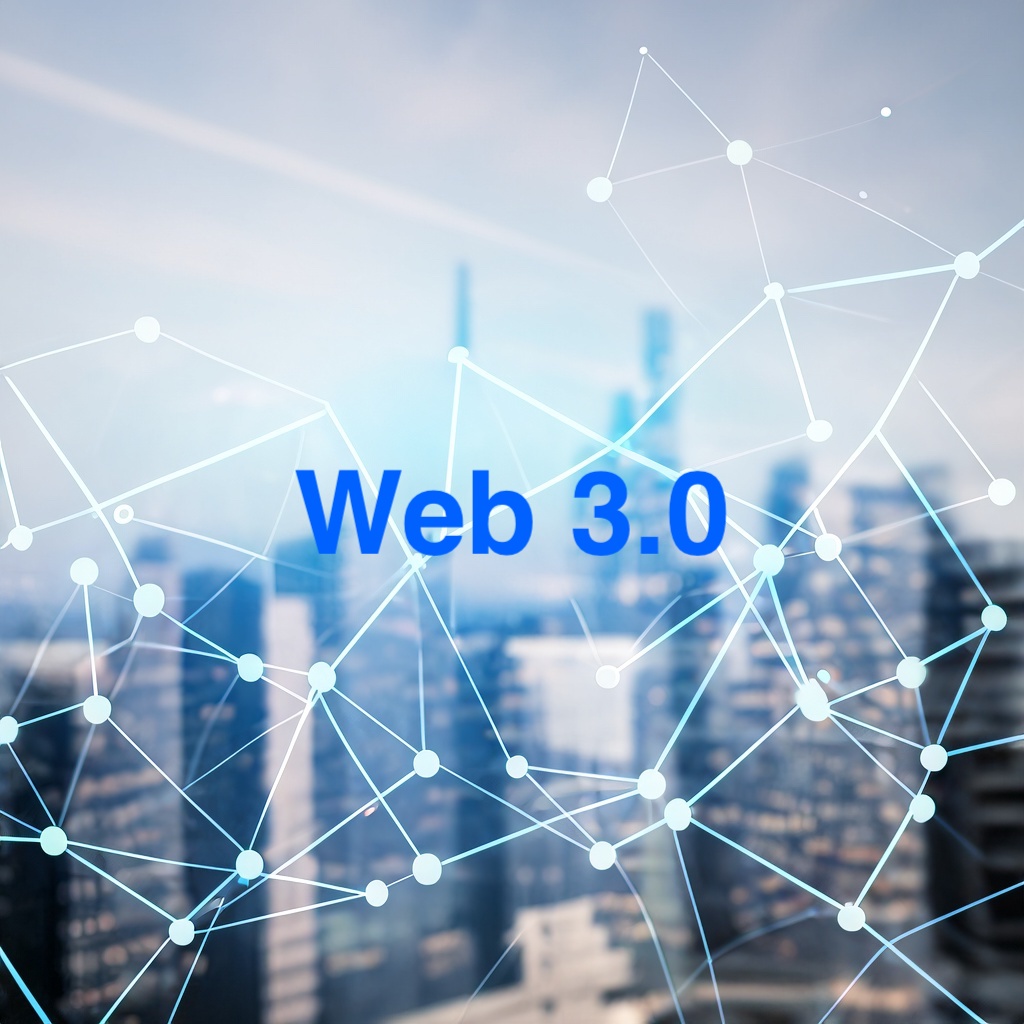 LogicBolts
LogicBolts 